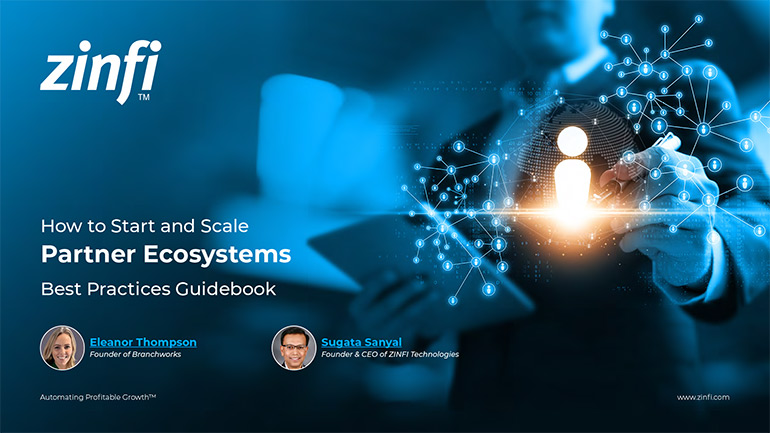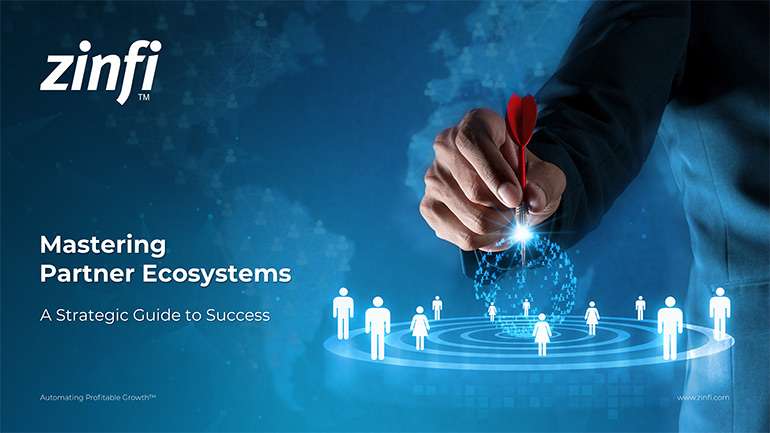Best Practices Articles

Five Core Best Practices in Partner Relationship Management
More and more companies today are marketing and selling through the channel to increase reach and velocity of product distribution. This wasn’t the case 30 or 40 years ago. Remember mercantile traders? While it’s true the channel as a distribution strategy has existed for centuries, today it’s very much a mainstream practice, and most companies selling to consumers or businesses consider the channel as a very effective way to go to market.
However, building a network of successful channel partners require a thoughtful approach and adherence to best practices. Here are the five core partner relationship management best practices.- Know your partners. Before you can put together a solid partner relationship management framework and strategy, it is essential for you to understand who your partners are, how they make money, how they differentiate in the marketplace they sell to and what keeps them awake at night. Without understanding these fundamental drivers, it is almost impossible for an organization to get true engagement from their partner base. In addition to understanding their business drivers, it is also important for you to figure out how your products fit into their product portfolio. If your solution is the primary product in their portfolio, they will engage accordingly, but if you are just an add-on, your approach to managing the relationship will have to be different.
- Understand the mathematics of reach. Sometimes it is tempting to go for the widest distribution possible by signing up as many partners or resellers as you can. However, this approach brings challenges like over-distribution, channel conflict and potential lawsuits, and needless to say poses the risk of creating a lot of unproductive and unhappy partners. Therefore, it’s very important to understand in detail how you are going to distribute your products to end buyers and calculate how many partners you need to hit your revenue growth goals. You would be surprised how few companies actually sit down and do this math.
- Calculate training and incentives requirements. Just like any new relationship, your relationship with new partners can be quite exciting in the beginning. Eventually, however, companies realize that it actually takes more to train an indirect sales force than it does to train your own employees. The reason for this is very simple: Learning about your products is the primary focus of a direct sales force, but partners typically are learning about and selling products from multiple vendors, so it is very difficult for them to invest the time in learning about yet another product, especially if the product is constantly changing due to new capabilities, new versions and so on. The fact is, partners tend to spend more time selling existing or mature products more than new products. This is a major insight that many companies overlook at first, often realizing it only after they have failed to reach the sales velocity of new products they had hoped for.
- Manage the loyalty of partners. It is important for you to understand that a partner’s primary loyalty is to their customer base and their employees. No matter how great your products and services are, if your activity in anyway undermines a partner’s relationship with their customers, your partner’s relationship with you may be seriously threatened. So, while you must put your partners in the middle of your service and support infrastructure, you absolutely need to make sure their end-customers are treated with a white glove approach. This is essential in building reputation with your partner base. Your business may be transactional, but most partners build their business based on relationships first and transactions later on.
- Prune out under-performers. Despite your best efforts, sometimes relationships simply do not work. That’s when you have to sharpen your pencil, have that tough conversation with those partners who are not performing, and determine whether it is better to part ways or change something to get the relationship back on track. Don’t make the mistake of assuming that if you just hang on to a relationship it will get better over time. In most cases, that doesn’t happen. If your partners are not delivering, or your support costs are going through the roof because your partner is not investing enough time in learning your products and services, you will likely have to make the tough decision of parting ways. It is better to focus on a few partners who are delivering than spread your resources too thin and upset the ones that are performing.
I realize that identifying these five best practices for partner relationship management is a little bit like talking about motherhood and apple pie, but you would be surprised to see how few companies actually take an analytical approach to the channel by studying partner segmentations, their business drivers, core needs, solution alignment, rebates, investment and performance output to truly understand who is performing and who is not. “Hope is not a strategy,” goes an old saying. It may be a cliché, but it fully applies to best practices of partner relationship management. If you don’t know where you are going, any road will take you there. It is better for you to answer these questions in a systematic fashion than keep trying the same things and expecting different results.
Best Practices Guidebook
 The Ultimate Guide to Partner Marketing Success Best Practices
The Ultimate Guide to Partner Marketing Success Best PracticesDownload Guide
 How to Start and Scale Partner Ecosystems Best Practices
How to Start and Scale Partner Ecosystems Best PracticesDownload Guide
 The Evolution of PartnerOps: Past, Present & Future Best Practices
The Evolution of PartnerOps: Past, Present & Future Best PracticesDownload Guide
 Mastering Channel Sales: Strategies, Best Practices, and Growth Tactics for 2025
Mastering Channel Sales: Strategies, Best Practices, and Growth Tactics for 2025Download Guide
 Winning with Partner Advisory Councils: Best Practices for Partner Engagement & Growth
Winning with Partner Advisory Councils: Best Practices for Partner Engagement & GrowthDownload Guide
 The Future of Partner Ecosystems Best Practices
The Future of Partner Ecosystems Best PracticesDownload Guide
 The AI Revolution: How Technology and Talent are Shaping the Future
The AI Revolution: How Technology and Talent are Shaping the FutureDownload Guide
 Top 105 Partner Management Metrics that Matter Best Practices
Top 105 Partner Management Metrics that Matter Best PracticesDownload Guide
 Mastering PRM Integration Best Practices
Mastering PRM Integration Best PracticesDownload Guide
 Building a Sales Partner Portal with Salesforce Best Practices
Building a Sales Partner Portal with Salesforce Best PracticesDownload Guide
 Building and Managing Partner Ecosystems Best Practices
Building and Managing Partner Ecosystems Best PracticesDownload Guide
 Mastering Co-Marketing and Co-Selling Best Practices
Mastering Co-Marketing and Co-Selling Best PracticesDownload Guide
 Transforming Partner Ecosystems Best Practices
Transforming Partner Ecosystems Best PracticesDownload Guide
 Mastering Partner Ecosystems Best Practices
Mastering Partner Ecosystems Best PracticesDownload Guide
 Mastering Partner Onboarding Best Practices
Mastering Partner Onboarding Best PracticesDownload Guide
 Partner Ecosystem Management Best Practices
Partner Ecosystem Management Best PracticesDownload Guide
 B2B Marketing in the Age of Intelligence Best Practices
B2B Marketing in the Age of Intelligence Best PracticesDownload Guide
 Multi-Partner Co-Selling Best Practices
Multi-Partner Co-Selling Best PracticesDownload Guide







